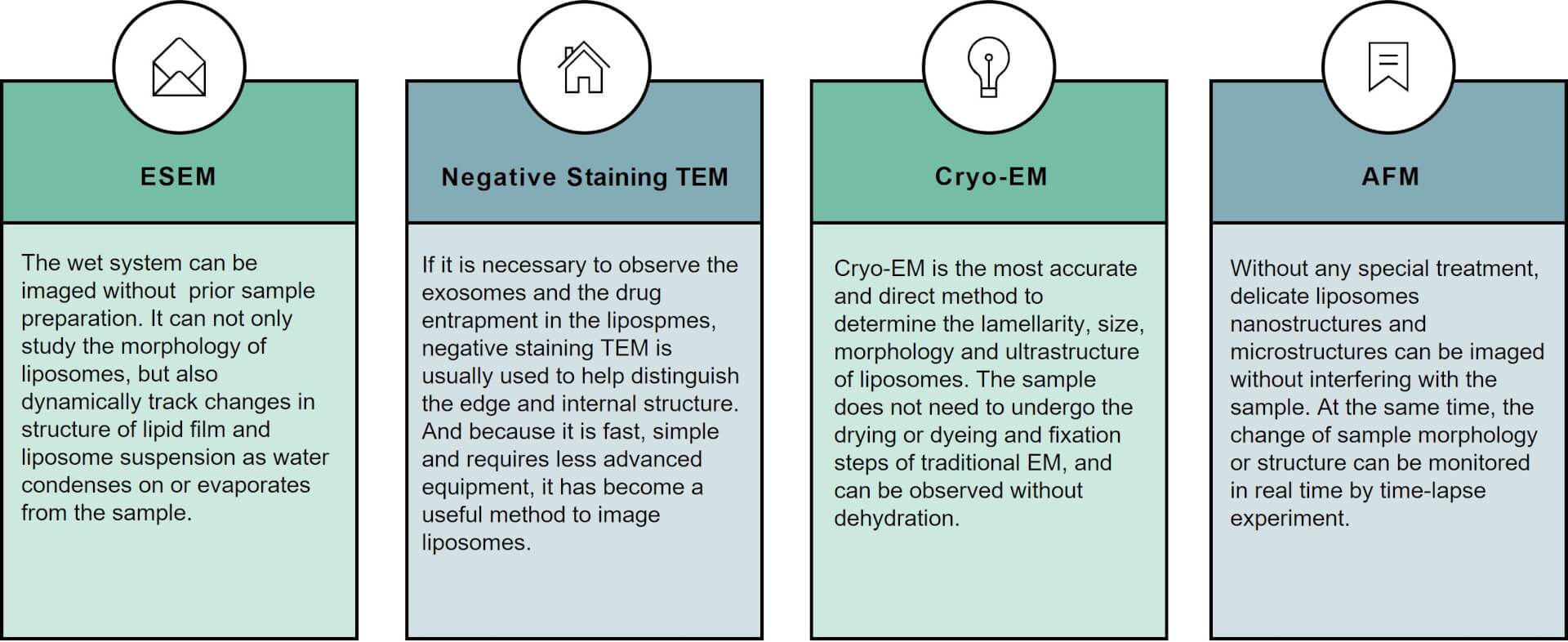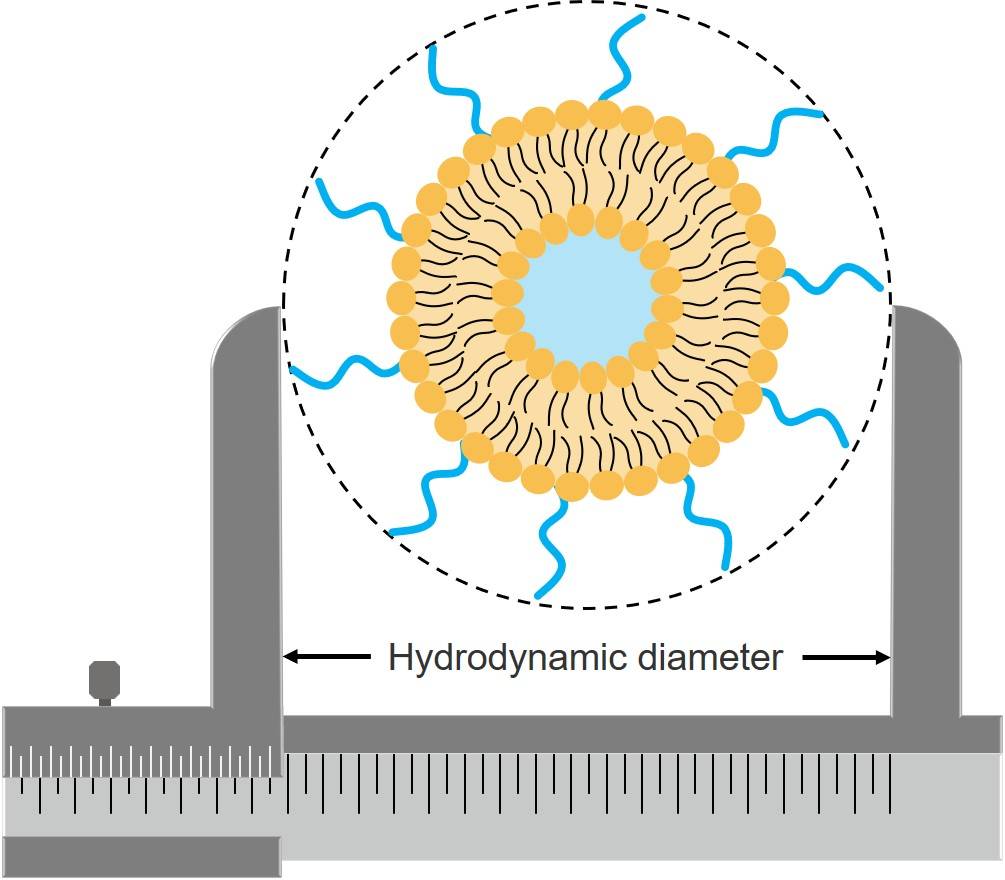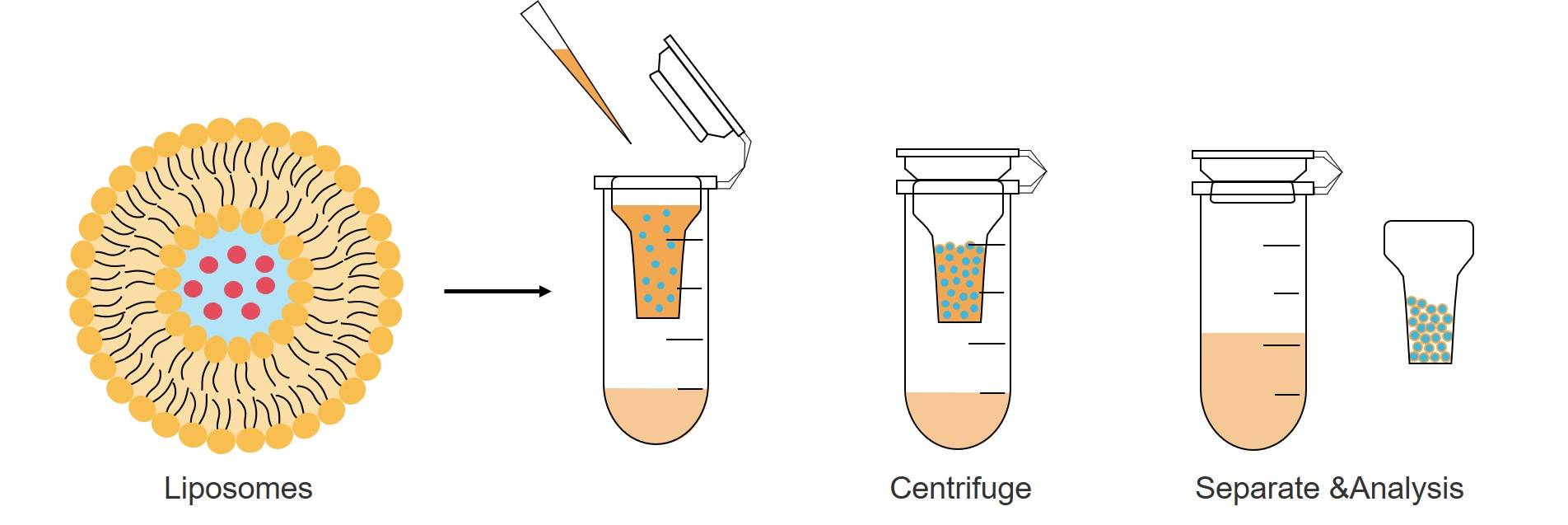Lipid-based Basic Characterization Service
With over years of experience, Creative Biolabs has extensive expertise in liposome research. Our scientists take pride in delivering top-notch liposome products and services through our advanced platform. We offer characterizations including morphology (i.e., shape), particle size, distribution, zeta potential, encapsulation efficiency (EE), and drug loading (DL) for fundamental analysis of the physicochemical properties of liposomes.
Importance of Basic Characterization for Liposomes
Liposome performance is significantly influenced by their chemical and physical characteristics. The morphology (such as spheres, rods, worms, and disks) determines the surface-to-volume ratio, which influences their blood circulation time and targeting capability. Furthermore, the drug loading and particle size of liposomes are the most significant variables influencing the pharmacokinetic and pharmacodynamic characteristics of drugs. To ensure the stability of liposome systems, zeta potential and polymer dispersity index (PDI) measurements are commonly used. By avoiding the toxicity associated with surface charge, a specific zeta potential can enhance the biocompatibility of liposomal delivery systems. PDI is a dimensionless value from 0 to 1 that reflects the width of the particle size distribution. The smaller the PDI, the more uniform the liposome size is. Therefore, precise and efficient measurement of liposome properties is essential for the development of novel and effective drug delivery systems.
Methods for the Basic Characterization of Liposomes in Creative Biolabs
Morphology
The morphology of liposomes is usually measured using transmission electron microscopy (TEM) and scanning electron microscopy (SEM). In addition, Creative Biolabs offers not only conventional electron microscopy analysis but also more advanced and accurate detection technology services. These include the following.

Particle size and PDI
Dynamic light scattering (DLS) is a commonly used method for measuring the size of liposomes. DLS measures the hydrodynamic diameter, which is the total diameter of the core particle with its surface-bound ions and adsorbed polymers. DLS analyzes the motion of particles based on the intensity of scattered light over time, which allows to measurement of Z-average size and PDI for liposomes.
 Fig 1. Schematic of hydrodynamic diameter.
Fig 1. Schematic of hydrodynamic diameter.
Additionally, we have tunable resistance pulse sensing (TRPs) and nanoparticle tracer analysis (NTA) tools at our disposal to quantify liposome particle size.
Zeta potential
Particle suspensions with zeta potential > +30 mV or < -30 mV are deemed stable. Electrokinetic analysis (ETA) is a method that effectively measures the zeta potential of liposomes. It is based on measuring the migration velocity of a particle in an electric field to analyze the surface charge state. Another method is electrophoresis, in which the zeta potential is obtained by placing liposomes in an electrophoretic bath with voltages applied at both ends to measure their migration rate.
EE and DL
The determination of EE and DL first requires separating the encapsulated drug from the free drug in liposomes. Subsequently, various analytical techniques such as spectroscopy and chromatography are employed to detect the concentration of the encapsulated drug or free drug. We offer a wide range of determination methods, such as centrifugation, ultrafiltration centrifugation, dextran gel column method, microcolumn centrifugation, dialysis and retrodialysis, protamine aggregation, and fluorescence.
 Fig 2. Drug separation for EE and DL test.
Fig 2. Drug separation for EE and DL test.
Features of Our Services
Creative Biolabs offers comprehensive solutions and equipment for the basic characterization of liposomes. We strive to provide professional and dependable services tailored to your specific project requirements and sample conditions.
-
Experienced experts and sophisticated instruments
-
Pre-designed and customizable experimental protocols
-
Reliable experimental data and professional analysis
-
Best after-sales service
Please contact us for expert advice and solutions to your research challenges.

For Research Use Only. Not For Clinical Use
![]()
 Fig 1. Schematic of hydrodynamic diameter.
Fig 1. Schematic of hydrodynamic diameter.
 Fig 2. Drug separation for EE and DL test.
Fig 2. Drug separation for EE and DL test.

 For Research Use Only. Not For Clinical Use
For Research Use Only. Not For Clinical Use


